Lag-screw and plate fixation
1. General considerations
Introduction
A wedge fragment may be fixed to both end segments with lag screws if the fractures are sufficiently oblique and the wedge fragment large enough. A lateral or dorsal neutralization plate is then applied to protect the lag screw.
This technique is useful to gain more stability if particularly only nonlocking plates are available.
If the fracture morphology allows only one lag screw, fracture stabilization is completed with a lateral or dorsal bridge plate.
Smaller lag screws (1.0 or 1.3 cortical) should be used to avoid vascular compromise and further fragmentation. In doubt, bridge plating should be considered.
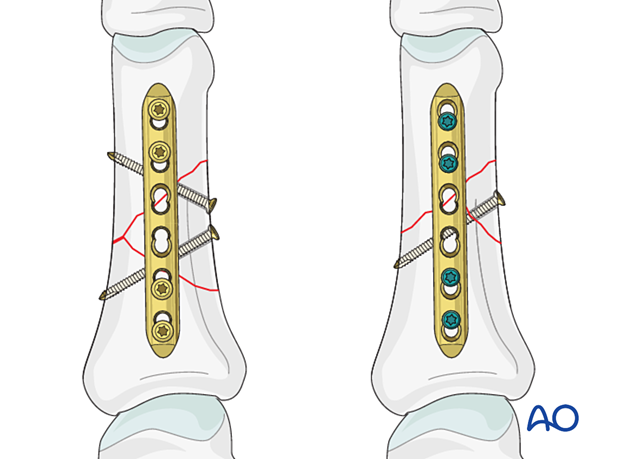
Lag-screw planning
Obliquity of the wedge fracture is possible either in the plane visible in the AP or lateral views. Always confirm the fracture configuration with views in both planes.
In this procedure, an oblique wedge fracture visible in the lateral view is shown with lag-screw fixation protected with a lateral plate.
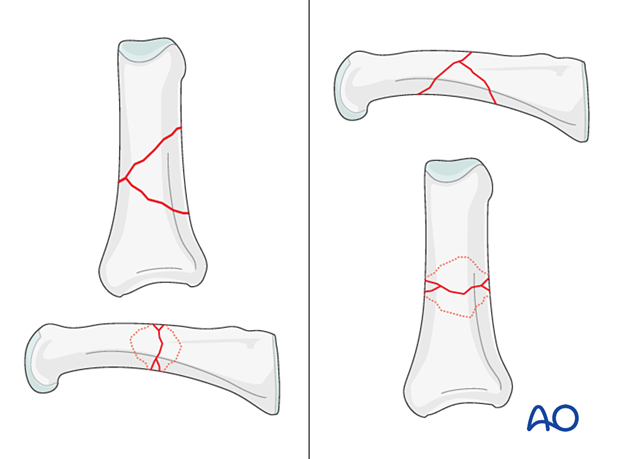
Plate selection
For plating, several plate types may be used:
- Conventional straight locking compression plate (LCP); dorsal and lateral
- T-plate; dorsal
- Strut plate; dorsal
- Condylar plate; lateral or dorsal
- Phalangeal base plate; lateral or dorsal
The plates may come with or without variable-angle (VA) locking-head screws. If an anatomical plate is not available, a conventional minicondylar plate may be used.
The plate selection depends on the fracture pattern and should allow at least two screws in the proximal and distal main fragment.
In this procedure, plate fixation with a lateral phalangeal base plate is shown.
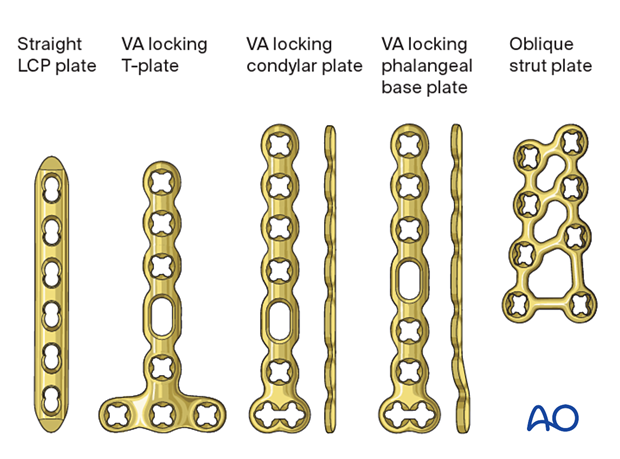
2. Patient preparation
Place the patient supine with the arm on a radiolucent hand table.

3. Approaches
For this procedure, the following approach is normally used for application of a lateral plate:
Application of a dorsal plate may require a dorsal approach:
4. Reduction
Gaining length
Length can be gained by traction applied manually, by a finger trap, or with pointed reduction forceps.
Confirm length and rotation with the neighboring fingers with the metacarpophalangeal (MCP) joint in 90° flexion.
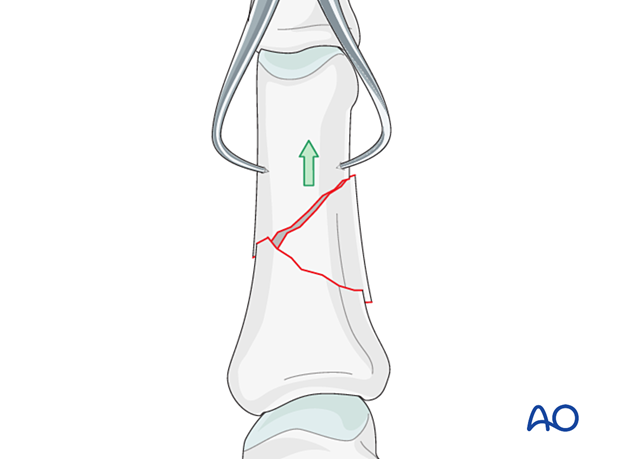
Reducing rotation and angulation
Manipulate the fragments with pointed reduction forceps to reduce rotation and restore correct angulation.

Preliminary fixation
Preliminarily secure the reduction with K-wires or reduction forceps.
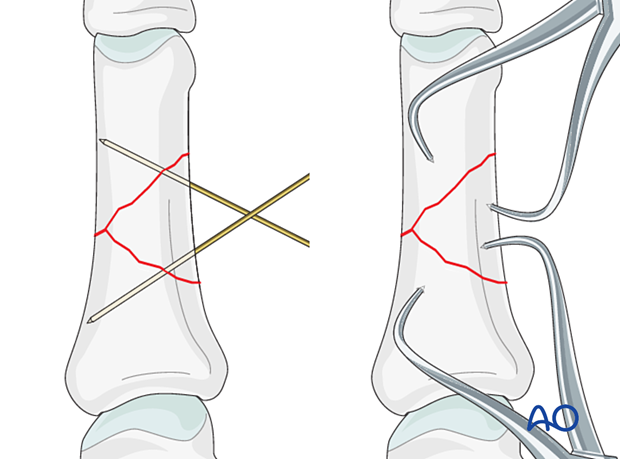
Alternatively, hold the reduction with reduction forceps designed for percutaneous technique. Impingement of soft tissues should be avoided.
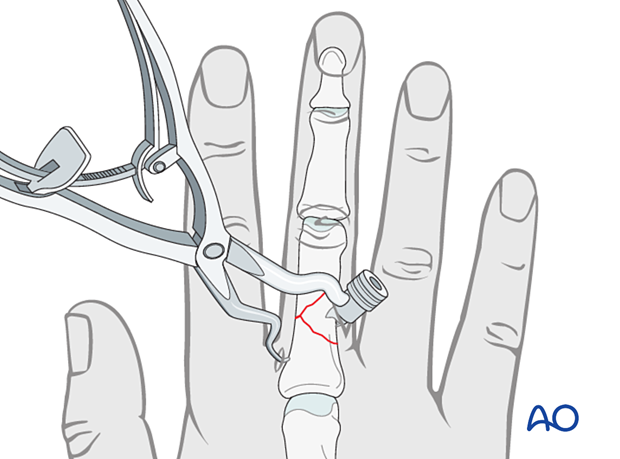
5. Checking alignment
Identifying malrotation
At this stage, it is advisable to check the alignment and rotational correction by moving the finger through a range of motion.
Rotational alignment can only be judged with flexed metacarpophalangeal (MCP) joints. The fingertips should all point to the scaphoid.
Malrotation may manifest by an overlap of the flexed finger over its neighbor. Subtle rotational malalignments can often be judged by a tilt of the leading edge of the fingernail when the fingers are viewed end-on.
If the patient is conscious and the regional anesthesia still allows active movement, the patient can be asked to extend and flex the finger.
Any malrotation is corrected by direct manipulation and later fixed.
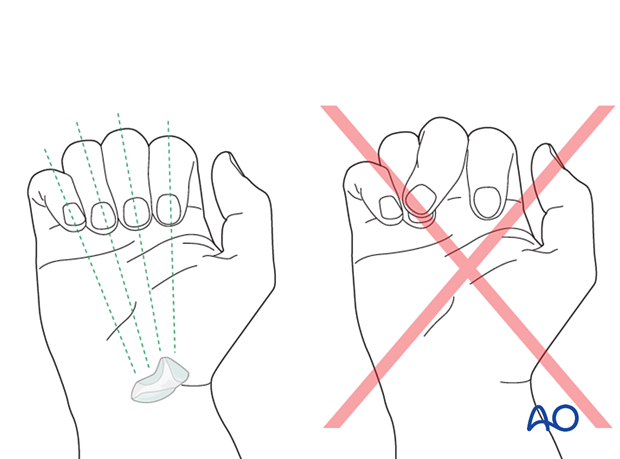
Using the tenodesis effect when under anesthesia
Under general anesthesia, the tenodesis effect is used, with the surgeon fully flexing the wrist to produce extension of the fingers and fully extending the wrist to cause flexion of the fingers.
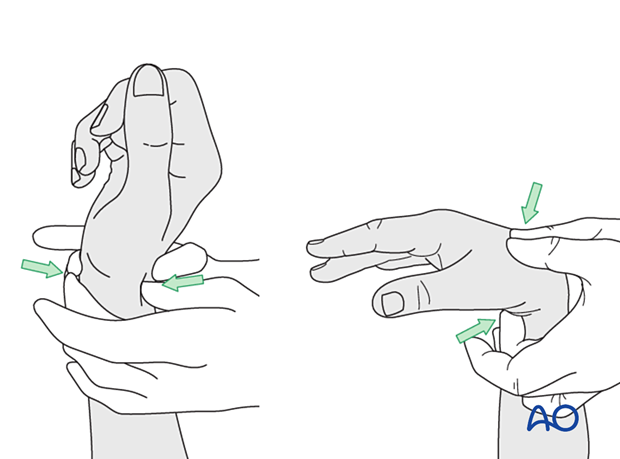
Alternatively, the surgeon can exert pressure against the muscle bellies of the proximal forearm to cause passive flexion of the fingers.
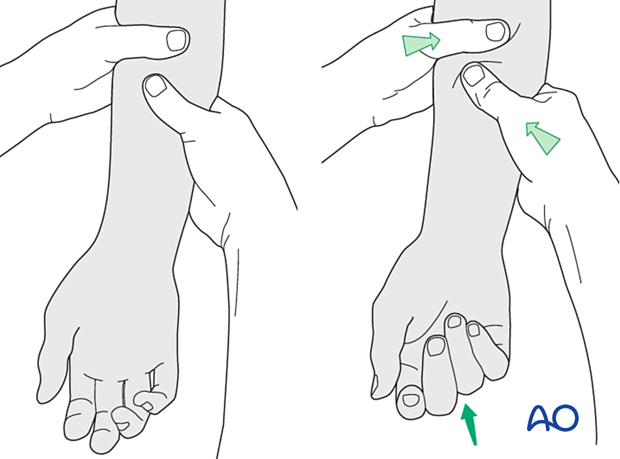
Confirm fracture fixation and stability with an image intensifier.
6. Lag-screw fixation
The lag screw should be inserted centered on and as perpendicularly to the fracture plane as possible and from the dorsal surface. The direction of the obliquity of the fracture plane dictates the exact position of the lag screw.
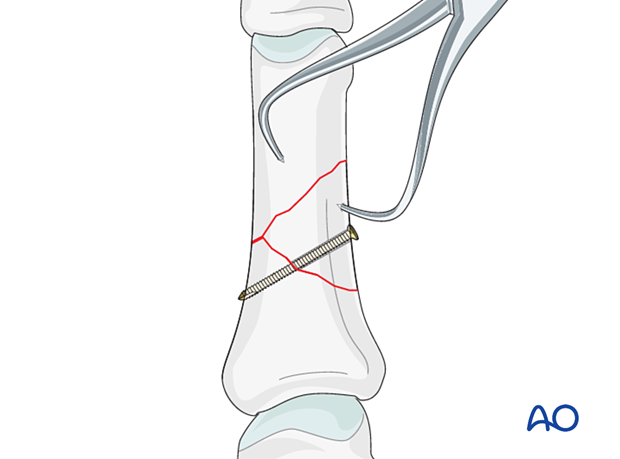
Fix the wedge fragment to the other end segment with another lag screw if the size of the wedge fragment and the fracture plane allow it.
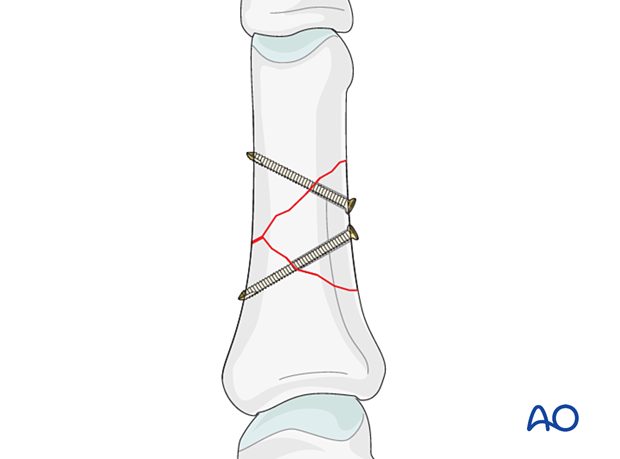
Screw size selection
The exact size of the diameter of the screws used will be determined by the fragment size and the fracture configuration.
The various gliding and thread hole drill sizes for different screws are illustrated here.

Screw length pitfalls
- Too short screws do not have enough threads to engage the cortex properly. This problem increases when self-tapping screws are used due to the geometry of their tip.
- Too long screws endanger the soft tissues, especially tendons and neurovascular structures. With self-tapping screws, the cutting flutes are especially dangerous, and great care has to be taken that the flutes do not protrude beyond the cortical surface.

Pitfall: screw too close to the fracture
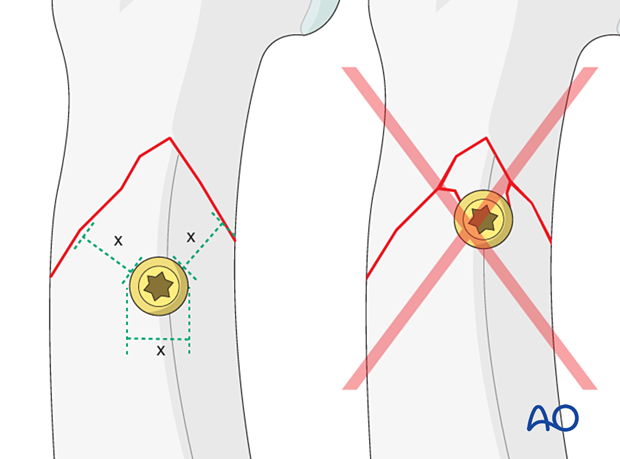
Pitfall: beware of fissure lines
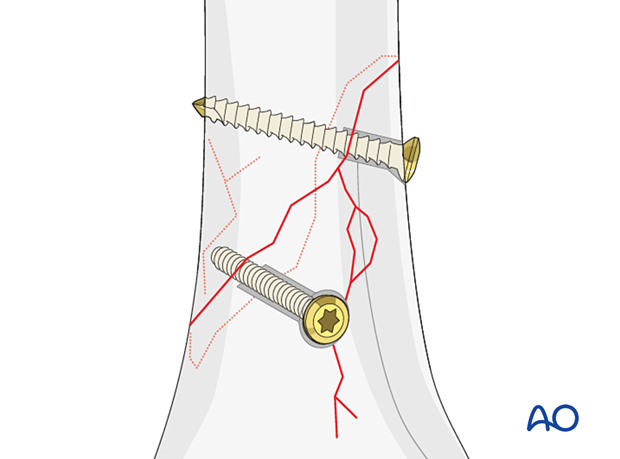
7. Plate fixation
Neutralization plate
Apply the neutralization plate depending on the fracture plane and the lag-screw position, either dorsally or laterally.
Insert at least two screws proximally and distally to the fracture in neutral mode.
Plate trimming
Select or adapt the plate length to fit the length of the proximal phalanx. Avoid sharp edges, which may be injurious to the tendons.
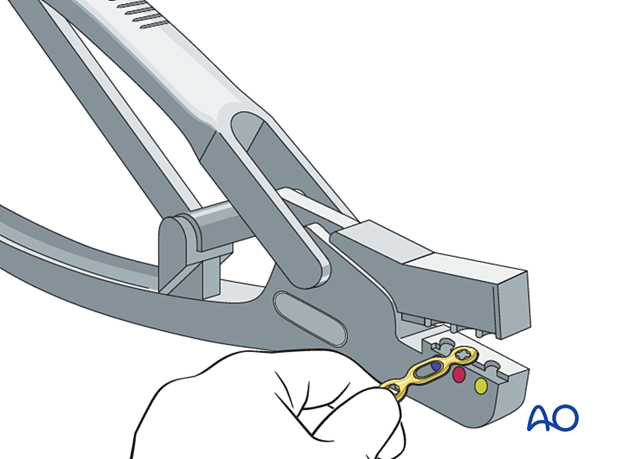
Contouring
Contour the plate to the shape of the proximal phalanx with the specific bending plyers. This ensures that the plate does not produce displacement of the fracture.
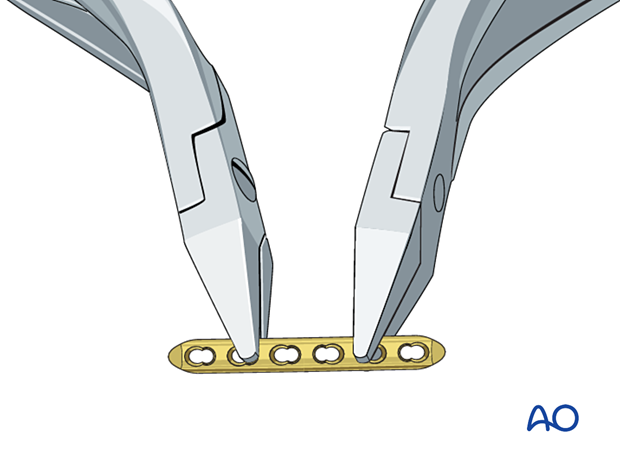
Plate positioning
Place the plate dorsal centered on the diaphysis in the coronal plane, allowing at least two screws in both main fragments.
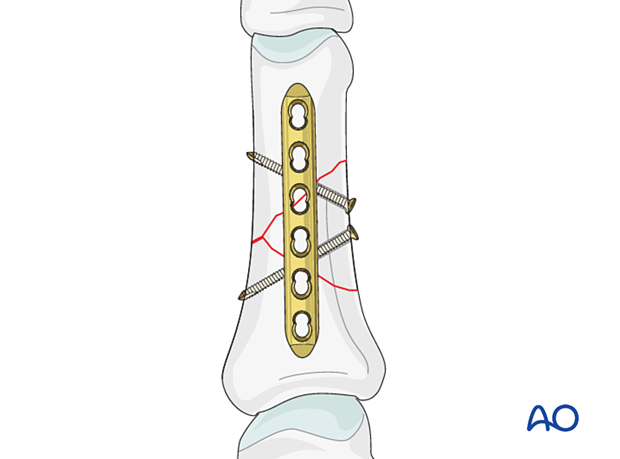
Insertion of screws
Insert screws into the proximal main fragments.
Take care not to violate the joint surface.
Confirm reduction and implant position with an image intensifier.
Complete the plate fixation by introducing screws into the other main fragment.
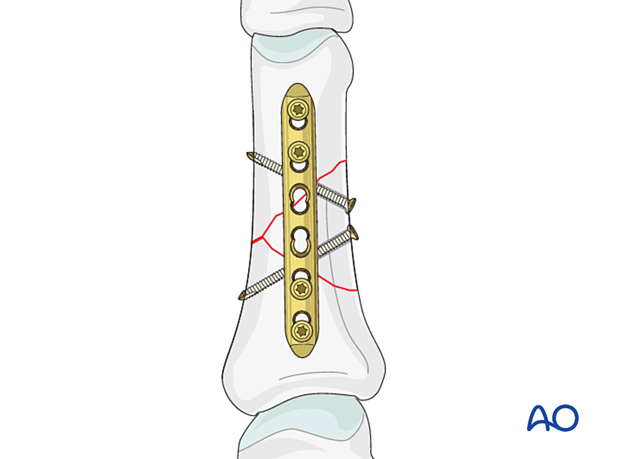
Bridge plate
If the wedge fragment can only be fixed to one end segment, apply the plate in bridging mode. Compression may be applied with caution and if the fracture line stability allows.
Cover the plate with periosteum to avoid adhesion between the tendon and the implant leading to limited finger movement.
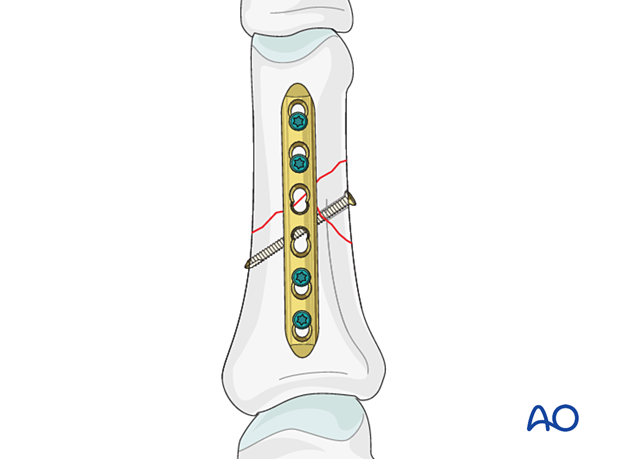
8. Final assessment
Confirm fracture reduction and stability and implant position with an image intensifier.

9. Aftercare
Postoperative phases
The aftercare can be divided into four phases of healing:
- Inflammatory phase (week 1–3)
- Early repair phase (week 4–6)
- Late repair and early tissue remodeling phase (week 7–12)
- Remodeling and reintegration phase (week 13 onwards)
Full details on each phase can be found here.
Postoperative treatment
If there is swelling, the hand is supported with a dorsal splint for a week. This would allow for finger movement and help with pain and edema control. The arm should be actively elevated to help reduce the swelling.
The hand should be splinted in an intrinsic plus (Edinburgh) position:
- Neutral wrist position or up to 15° extension
- MCP joint in 90° flexion
- PIP joint in extension
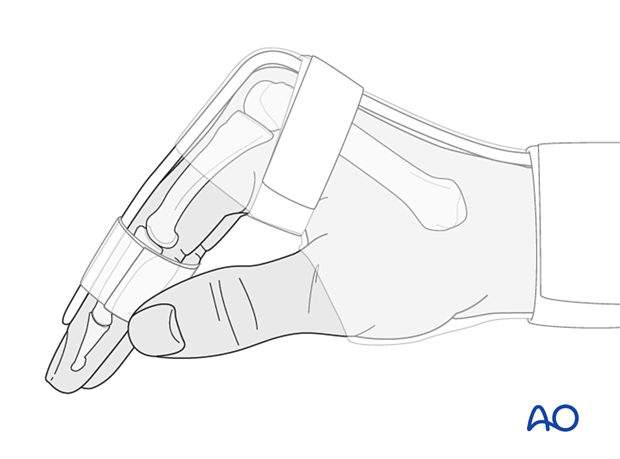
The reason for splinting the MCP joint in flexion is to maintain its collateral ligament at maximal length, avoiding scar contraction.
PIP joint extension in this position also maintains the length of the volar plate.
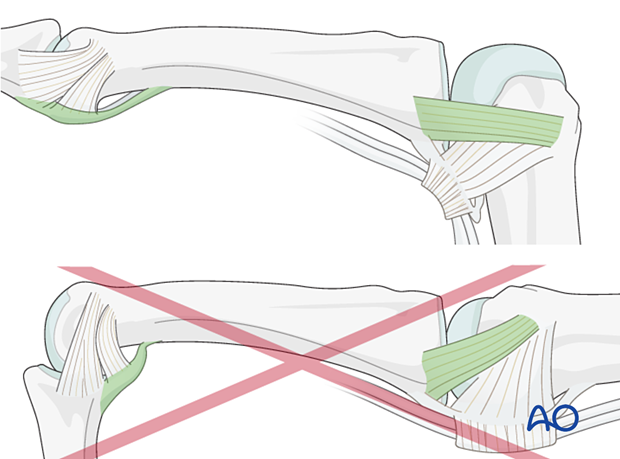
After subsided swelling, protect the digit with buddy strapping to a neighboring finger to neutralize lateral forces on the finger.
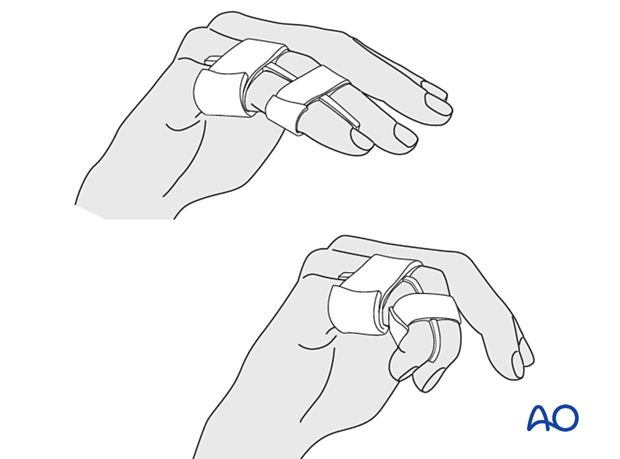
Functional exercises
To prevent joint stiffness, the patient should be instructed to begin active motion (flexion and extension) immediately after surgery.
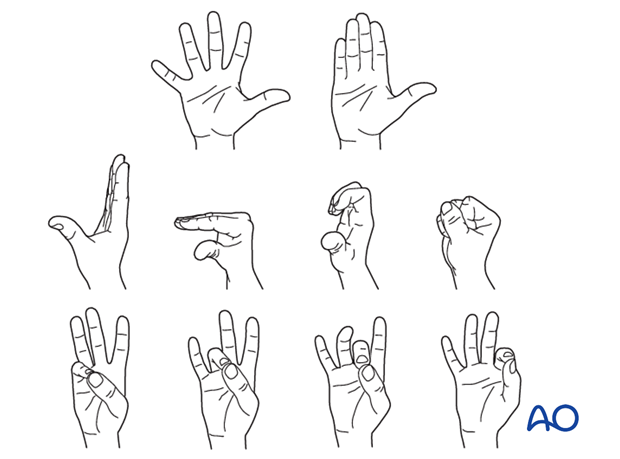
Follow-up
See the patient after 5 and 10 days of surgery.
Implant removal
The implants may need to be removed in cases of soft-tissue irritation.
In case of joint stiffness or tendon adhesion restricting finger movement, arthrolysis or tenolysis may become necessary. In these circumstances, the implants can be removed at the same time.
10. Case
AP x-ray of a wedge fracture of the 5th proximal phalangeal shaft
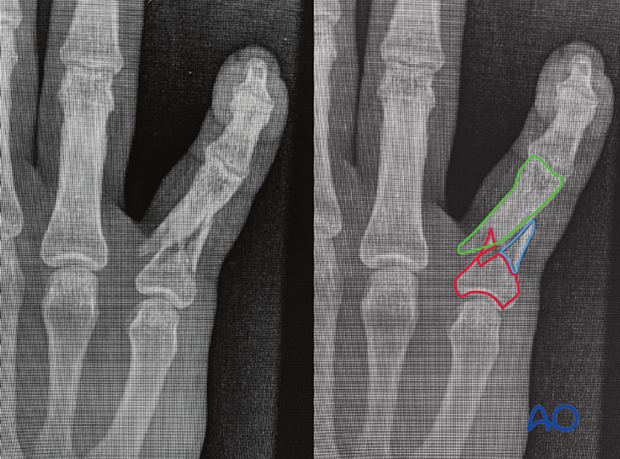
Lateral x-ray
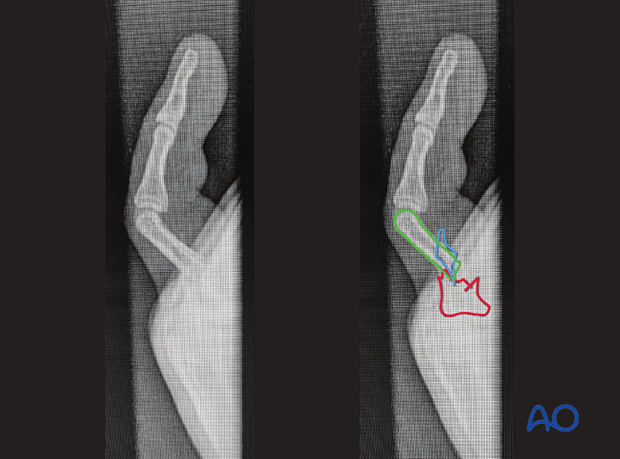
Intraoperative image of lag-screw fixation
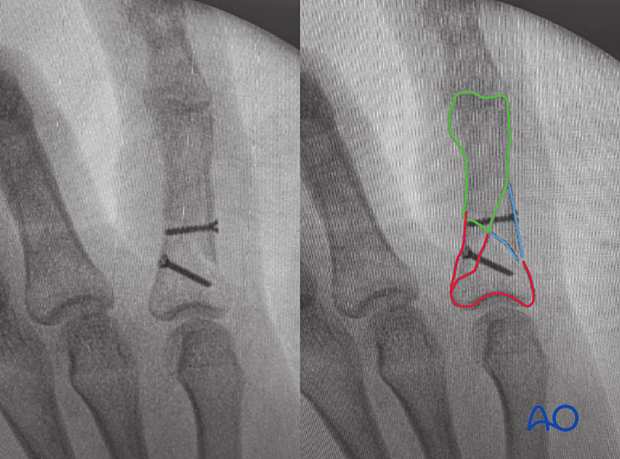
Intraoperative image of the same case with the plate applied and fixed with the first screws
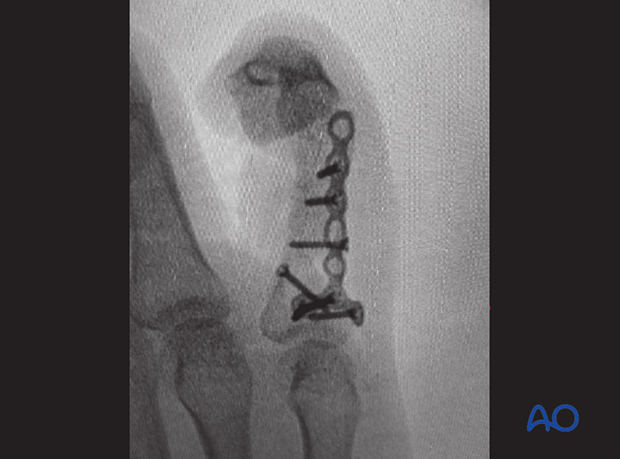
Final construct














